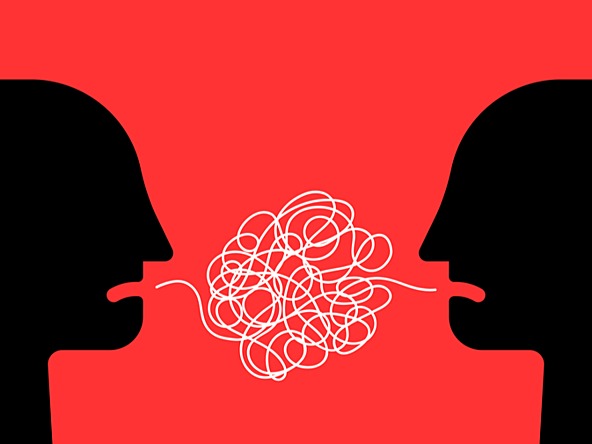What do TV dramas teach us about how to handle conflict at work?

Conflict is having a moment. I’ve devoured the Netflix drama Beef, which documents the escalation of a one-off road incident, and like half the nation, was addicted to The Traitors.
As well as the high budget set, excellent casting, and the wardrobe (those cloaks!) what got us all so hooked on The Traitors was that it’s about what happens when you put winning ahead of personal relationships.
As agencies, there’s a lot we can understand and learn from this.
The cost of conflict
Conflict diverts finite energy away from doing the work, and impacts relationships, team cohesion, and ultimately an agency’s productivity. The financial impact of conflict at work is potentially huge; according to a 2021 analysis produced by Acas:
- Conflict is estimated to cost the UK £28.5bn a year, at an average cost of £1,000 per employee
- 874,000 employees are estimated to take sickness absence each year, related to conflict, at an estimated cost to their organisations of £2.2bn.
Is all conflict bad?
There’s a difference between disagreement and conflict. The ability to disagree with one another is a healthy metric for any team and agency. Insight is all about seeing the world differently and shining a light on that for our clients, so having a culture where everyone can voice their opinions freely and be heard is a positive thing. It helps correct the biases that still persist around gender, background, race, thinking style, etc.
Conflict is different. It occurs when a person, or team’s behaviour adversely affects others. Like in The Traitors, it is caused when people are pursuing different goals, and there are finite resources – pots of money, promotions, people for projects. Without intervention, conflict can escalate from irritation to annoyance, to anger and even violence (although at work, this is usually more about sabotage than physical violence!)
On the other side of conflict lie positive outcomes. In the Netflix drama Beef, when they are finally forced to spend time with one another, both parties develop a deeper understanding, not only of one another, but of themselves. When the emotion is expended, they access a more honest way of communicating, than they had even been able to have with their own families.
How can agencies manage conflict productively?
Conflict is a reality of agency life. To help access the personal growth and enhanced relationships that lie on the other side of conflict, we can deploy the following strategies.
1. Be willing to engage
This is often a tough one to crack. People might not see an issue or may feel any discussion would be fruitless or be too emotional to engage. Here, we must help people see the benefits of engaging, and so we spend time with them one to one, exploring what life on the other side of the conflict would be like, what the new environment would be like, who this would help and how people will feel. We articulate the agency’s goals and values and explain that a resolution is needed to meet these.
2. Accept responsibility
At work, we are striving for adult-to-adult relationships, yet during conflict, we sink into one of three unhelpful roles – the Persecutor, the Victim and the Rescuer. This is known as The Karpman Drama Triangle.

Supporting people to recognise where they are in this dynamic is a great first step to everyone in the conflict, not just the persecutor taking responsibility for the situation.
3. Turn around the telescope
During conflict, we become entrenched in our own position. We might rally supporters to our cause, making it a wider division. To stem this, I recommend the 10% rule – the other person is always at least 10% right, so what do they have a point on?
4. Conflict is about communication
Often, when I am brought in to coach new leaders, there will be some tricky relationships – either up, down or sideways. Rather than a conflict, as such, it is usually better explored as a communication issue. Exploring the gap between intent and impact is a fruitful way to move towards better relationships.
- What was your intention?
- And how did that land?
- What was the unintended consequence of how you delivered that?
- Knowing what you now know, what could you do differently?
We are experts in insight, and we understand that a brand’s ability to grow rests on how well it can communicate with its audience. Resolving conflict is no different; it’s all about effective communication. The gains that lie on the other side are rich and plentiful, for people and for the business.
Zoe Fenn is founder of You Burn Bright

We hope you enjoyed this article.
Research Live is published by MRS.
The Market Research Society (MRS) exists to promote and protect the research sector, showcasing how research delivers impact for businesses and government.
Members of MRS enjoy many benefits including tailoured policy guidance, discounts on training and conferences, and access to member-only content.
For example, there's an archive of winning case studies from over a decade of MRS Awards.
Find out more about the benefits of joining MRS here.














0 Comments